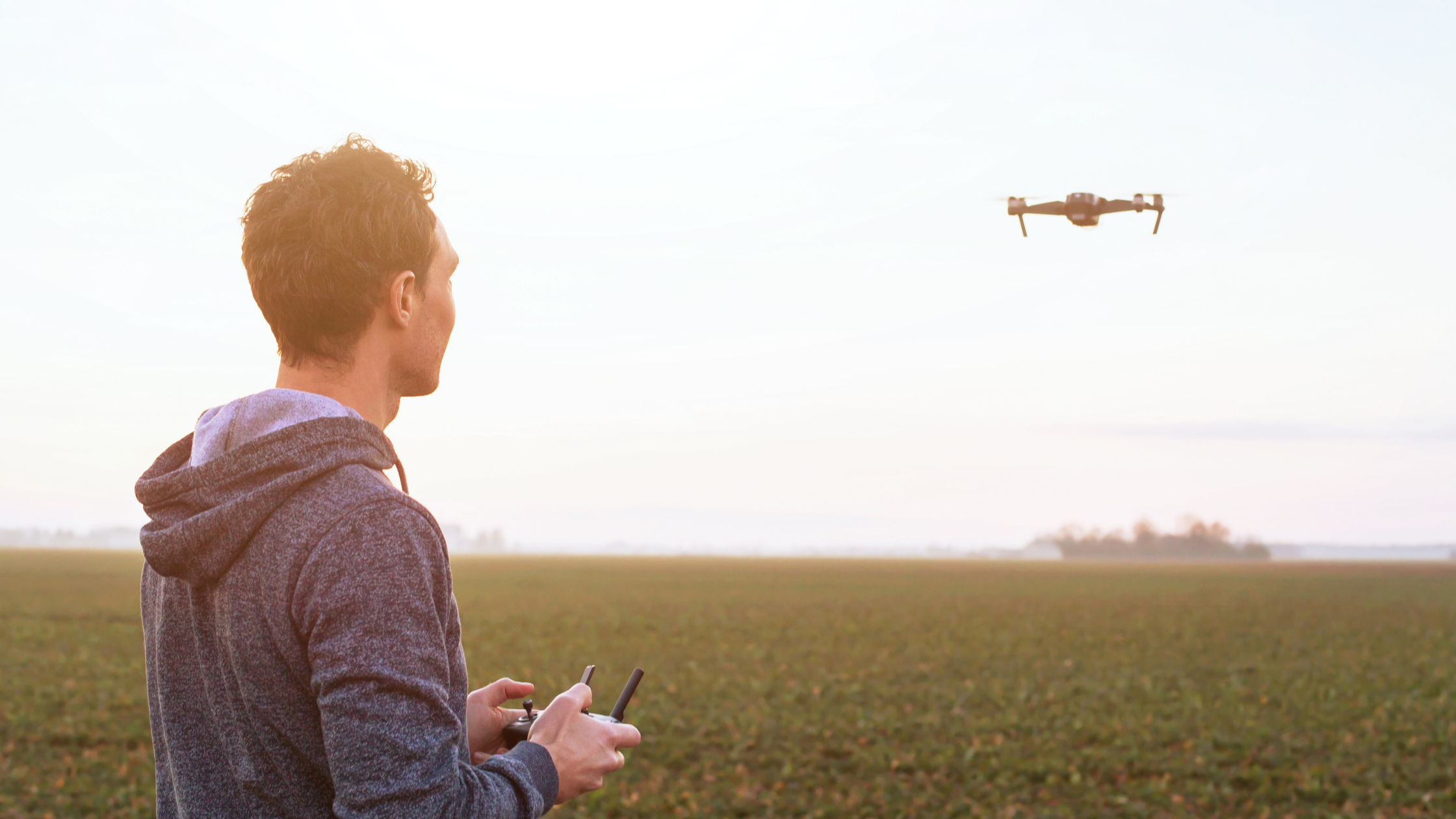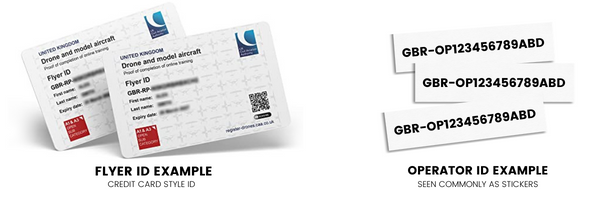So what is the difference between a Flyer ID and an Operator ID?
The CAA classes the person who flies the drone (the remote pilot) as the ‘flyer’. The person ultimately responsible for the drone is the ‘operator’. In practice, this distinction allows the operator to let other people fly the drone, provided they have the appropriate flyer ID . This method also allows for multiple pilots of the same drone, as might be necessary for a school or a professional environment.
It is the responsibility of the operator to control who has access to the drone and to ensure that the name of the operator is visible on the craft itself. To be granted an operator ID, you’ll need to be over eighteen — though there is no such age limit for remote pilots. You don’t need to register more than once: you can use the same operator ID on multiple drones and model aircraft.

(Note: It is mandatory for all drones and model aircraft from 250g to 25kg that are flown outdoors to have a registered Operator ID with the CAA attached to the aircraft.)
Flyer ID
Anyone who wants to fly must pass an online theory test on flying safely and legally. This test will have forty multiple choice questions and the pass mark is 30. To prepare for the test, flyers can use the Drone and Model Aircraft Code. Once the test has been passed, remote pilots will get a flyer ID, which acts as acknowledgement of competency as a remote pilot from the CAA. There is no minimum age requirement, however children under the age of 13 can only register with a parent or guardian present. Your registration is valid for three years and it is free of charge to register.
Operator ID
An operator ID is separate to a flyer ID in the sense that anybody who is responsible for a drone or model aircraft must register as an operator. Once you have registered, you will get an operator ID with your certificate of registration. You must display your operator ID on your drones and model aircraft. You can use the same operator ID for all your drones and model aircraft.
In order to be an operator, you must be aged 18 or over and your registration is valid for one year. The fee for this registration is £10 which is renewable annually.

Requirements To Register:
There are three main requirements that drone pilots must comply with. You must:
- Pass an online test to get a flyer ID if you want to fly a drone or model aircraft
- Register for an operator ID if you’re responsible for a drone or model aircraft
- Label any drones and model aircraft you’re responsible for with your operator ID
Who Needs To Register?
As there are no exemptions, everyone must register, including:
- Operators and flyers who have obtained an Operational Authorisation from the CAA
- Operators and flyers who have registered for any other services
- Members of model flying associations...
Note -If you are a member of any of the following associations, you will not need to register as an operator with the CAA system. With the operator's permission, the associations will collect the registration fee from members directly and supply their data to the CAA.
- Members of ARPAS-UK
- British Model Flying Association (BMFA)
- Scottish Aeromodellers’ Association (SAA)
- Large Model Association (LMA)
- FPV UK
How much does CAA registration cost?
If you’re flying your drone as a hobby, you’ll need to get into the habit of updating the Operator ID every year. There’s a £10 cost attached to applying for an Operator ID, while the Flyer ID is free.
Be aware that the Operator IDs last for just one year, while Flyer IDs last for five.
Do I need to register?
The regulations divide drones into five distinct categories, numbered from C0 to C4. Some drones are privately built and don’t come with class marks.
If your drone is in the C0 class or weighs less than 250g, you won’t need a flyer ID. You don’t need an operator ID, either — unless the drone is equipped with a camera. If the pilot is under thirteen, then they must have their parent present for registration of the Flyer ID, and the parent (or someone over 18) must register for an operator ID.
As such, it’s easy to recommend that new pilots stick to drones that fall under the weight limit. Consequently, you’ll see the weight advertised prominently on smaller drones targeted at new users.
Passing the test
To be issued a flyer ID, you’ll need to pass an online theory test. This test is a free multiple-choice test of 40 questions. You’ll need to get 30 of them right to pass, and you can consult the Drone and Model Aircraft Code during the test if you’re not sure of anything. There’s no time limit, — you can spend all day taking the test, provided that you’re not inactive for longer than an hour and a half.
If you don’t pass the test the first time, you can retake it as many times as you like.
The CAA recommends setting aside at least 30 minutes for the test — though most candidates find that they’re able to whiz through much quicker.
How Can You Register?
Simply visit register-drones.caa.co.uk
Using Your Drone or Model Aircraft Abroad
Your UK registration is not valid outside of the UK.
Dependent upon where you are wishing to fly, you will need to check with the relevant authority within the country you are visiting of the local requirements for flying drones and model aircraft. This is also the case with your insurance.
Overview of the sub-categories for drone flying:
Just as the drones themselves are split into categories, so too are the types of flight you can do.
The CAA refers to flights as ‘operations’, and they come in four basic types.
Open Category:A1 and A3
The ‘Open’ category is the starting point at which new pilots begin to fly. It’s low-risk and basic. It’s the category that requires the least skill and experience on the part of the pilot.
In A1, you’re flying over people; in A3, you’re flying far away from them. There are some limitations when it comes to the type of drone you’ll be piloting. Drones classed as C3 or higher, for example, can only be flown in A3 operations.
What ‘far away’ means is left open to interpretation, but the CAA use a minimum of 50m as a guideline; however, it’s a flexible guideline.
As the CAA’s official guide explains: “You can fly closer than 50m to people who are with you and who are involved in what you’re doing, such as friends, family or colleagues out flying with you. But always remember, you must never put anyone in danger.”
Open Category: A2
The A2 is what will allow you to fly close to people — but not over their heads.
To fly in this category, you’ll need to pass a more advanced theory exam and gain the A2 Certificate of Competency.
We have created a completely free e-Learning course for the A2 certificate of Competency, all you have to pay for is the Exam if/when you want to get your Certificate.
If you want to have a look at our A2 course, enrol for FREE (no obligation) here:
Specific & Certified Category
These categories of operation constitute an elevated level of risk, with ‘certified’ being comparable to the dangers in manned aviation. In the UK, regulations related to the latter category have not yet been developed — but suffice to say, most new drone pilots don’t need to worry about them.
CAA drone no-fly zones
‘Restricted airspace’ covers the vicinity of an airport. But it can also refer to other sensitive facilities and areas. Government buildings, prisons and royal residences might also all qualify. There are looser restrictions on flying near tall structures or near wildlife. You might also find that there are bylaws put in place to restrict drone activity in an area (often because they’re causing a nuisance to locals).
If you’re set on flying your drone at a given location, and you’re unsure of whether it’s right to do so, then simply ask the relevant authority.
Conclusion
Hopefully, this clears up any confusion surrounding the registration of your drone, Flyer ID and Operator ID. If you require any further information in regards to the registration process, contact the CAA by email drone.registration@caa.co.uk or call them directly on 03300229930.




